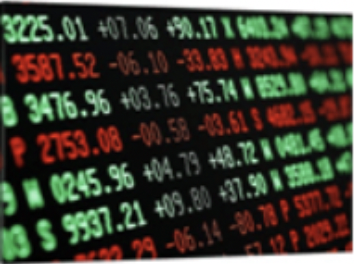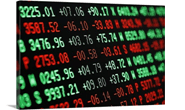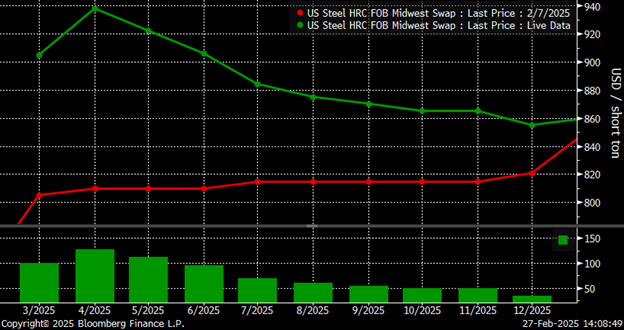Futures

Wherever you go, whatever you do, I'll be right here waiting for you…232
Written by David Feldstein
July 13, 2017
The following article on the hot rolled coil (HRC) futures markets was written by David Feldstein. As the Flack Global Metals director of risk management, Dave is an active participant in the hot rolled futures market, and we believe he provides insightful commentary and trading ideas to our readers. Besides writing futures articles for Steel Market Update, Dave produces articles that our readers may find interesting under the heading “The Feldstein” on the Flack Global Metals website www.FlackGlobalMetals.com.
While anyone attached to the steel industry is anxiously awaiting the outcome of the Section 232 investigation, flat rolled prices in China have continued to rally back to just under the highs seen in the first quarter.
Take notice as China comes alive!!!
Since we last met, the June ISM Manufacturing PMI gained a solid 2.9 points to 57.8 and beat consensus expectations of 55.3 by 2.5 points! The chart below compares the TSI Daily HRC Index with the ISM Manufacturing PMI and it sure looks like the TSI Midwest HRC price needs to play some catch-up.
ISM Manufacturing PMI and TSI Daily Midwest HRC Index
Today, the August LME Turkish scrap future settled at $303/mt while the August SGX iron ore future settled at $63.70/mt. Since June 1, LME scrap is up 9.4 percent and SGX ore is up 17.5 percent…kind of quietly.
Zinc and copper prices have been rallying, as well.
The dollar continues to make new lows, and a weaker dollar inflates commodity prices. The chart on the right compares the TSI North European HRC $/mt with the USD/Euro cross. In this case, the appreciation in the euro/weakness in the U.S. dollar looks to be a big reason for the downward pressure on the North European HRC price, as opposed to weak manufacturing. The Eurozone PMI is at 57.4, and the German PMI at 59.6 is the highest of any of the major global economies.
The CME Midwest HRC futures curve is off slightly since the last SMU article after some less-than-exciting index prints and news of steel trade concessions made by the U.S. to Canada and Australia at last week’s G20 meeting led to sellers pressuring prices lower at the outset of this week.
However, today just before 3pm EST, news that President Trump said he is “considering both quotas and tariffs on steel” hit the tape. While some folks may be wringing their hands with frustration that the administration is taking so long to announce a new policy, consider the effect the uncertainty has had on slowing import transactions and the influence that simply holding said uncertainty over the head of the industry has. What’s the administration’s motivation to rush an outcome?
All conspiracy theories aside, there was a noticeable pop in import licenses in June, while July is forecast to increase even further as importers look to be rushing tons through customs before any punitive actions are enacted. However, in the not so short-term, uncertainty looks to have caused both buyers and sellers of imported material to walk away until the issue is resolved, and this will likely lead to a sharp drop-off in imports in the coming months.
The opportunity in HRC futures might present itself at any time, so pay close attention to President Trump’s tweets, keep your local broker on speed dial and remember Ferrous Bueller’s philosophy…
“Life moves pretty fast. If you don’t stop and take a look around once in a while, you could miss it.”

David Feldstein
Read more from David FeldsteinLatest in Futures

HR Futures: Low-key market despite Trump tariffs
Despite the hand-wringing and head-scratching about the impact of President Trump’s tariff policy, the HRC futures market has been relatively subdued since our last writing of this article.

HR Futures: Nascent rally in HRC futures settles above 6-week downtrend
The CME Midwest HRC futures market’s response to Trump’s election and subsequent comments about blanket 25% tariffs on Canada and Mexico was surprisingly counterintuitive.

HR Futures: Market at crossroads after turbulent run
The market appears to be pausing after a turbulent run. But tension remains just beneath the surface. With net long positioning still elevated, sentiment-driven selling could quickly reignite volatility. Still, supply constraints and limited imports are laying the groundwork for a resilient physical market. This moment of calm feels more like a crossroads than a conclusion.

HR Futures: Traders’ views mixed as market navigates tariffs
A look at the HR futures market.

Market pressures trigger HR futures reversal
Market dynamics are shifting rapidly, with futures pricing diverging from physical fundamentals, creating a complex landscape for steel traders.







